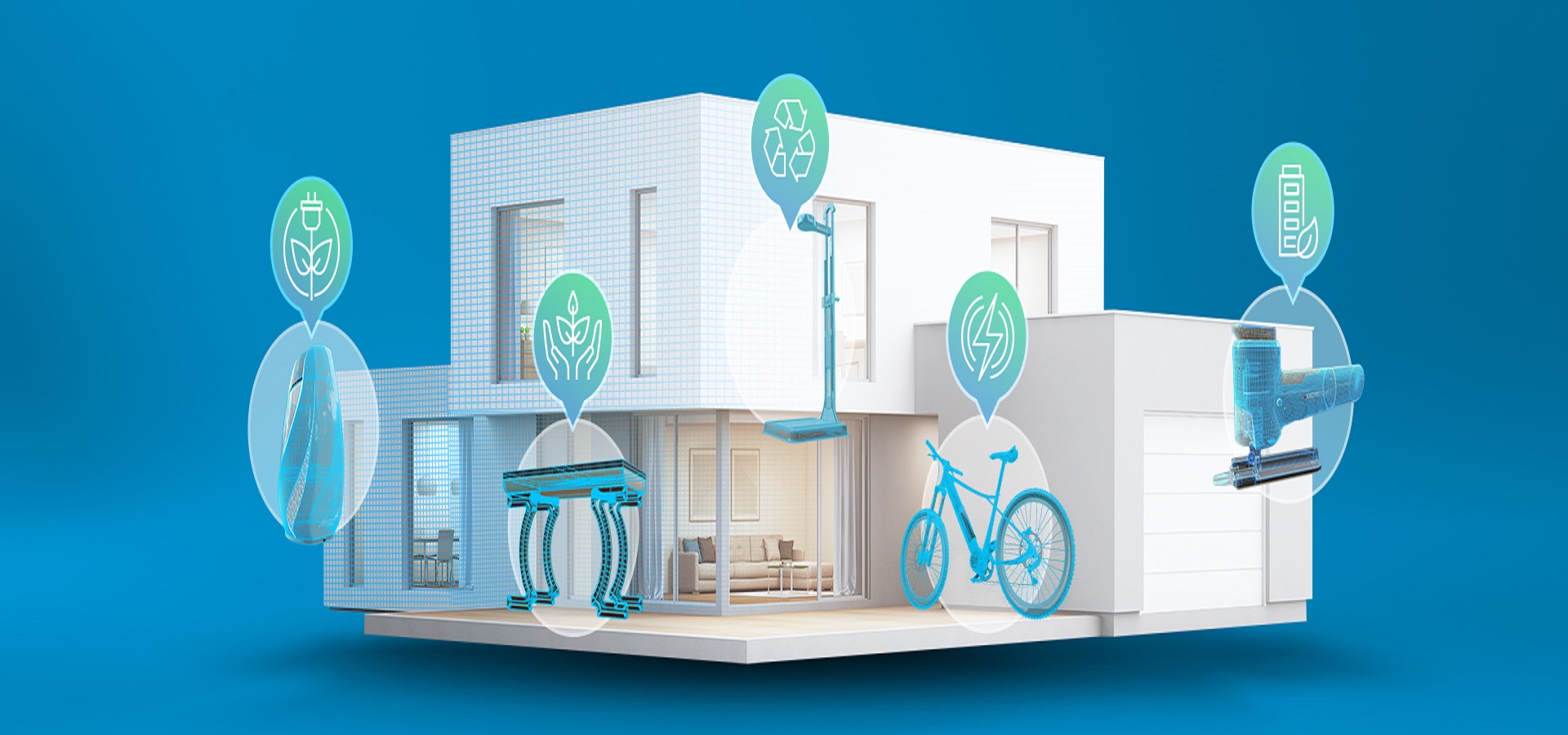Eco-Friendly Product Development by The Positive Home Project
Integrate product innovation with sustainable design practices on a single platform to lower a product’s environmental footprint with Sustainable Innovation Intelligence.
Sustainable development benefits continue to grow for consumer goods manufacturers as consumers seek more eco-friendly products –especially for the home. According to one study, online searches for sustainable goods rose by 71% globally over the past five years (The Economist Intelligence Unit). Consumer goods manufacturers increasingly view improving product circularity as a priority, especially in design and manufacturing processes.
So, what’s an optimal way for companies to design eco-friendly home products? Integrate product innovation with sustainable design. Place sustainability at the heart of your product design and development.
Redesign during product development for a more sustainable world
A team of designers and engineers improved the environmental footprint of popular home products in an effort called, The Positive Home Project. They did this using the Dassault Systèmes solutions for Home & Lifestyle on the 3DEXPERIENCE® platform. Read on to learn some of the sustainable product design methods that the team applied to reduce emissions and waste.
Three Keystones of Sustainable Product Design
1. Do More with Less
What if a single product could perform more than one function? Using furniture as an example, consumers want different tables to serve different needs: One table for dining and another for working on their laptop. Learn more about sustainable product design from a designer who shows how to apply circular design principles to develop a piece of modular furniture.
By integrating sustainability early in the product development process, this designer developed a small dining table, a larger dining table and a desk in one innovative product. By using reclaimed wood and eliminating two tables, the team managed to reduce wood use by 75%, and save up to 96.6% in land use.
2. Close the Loop
Building on lean principles and inspired by material conservation practices in different countries, The Positive Home Project team considered new design improvements to improve both sustainability and performance.
The designers on The Positive Home Project used Sustainable Innovation Intelligence, a platform-based lifecycle assessment solution, and the development solution, Perfect Consumer Product. Following are just two examples of the benefits:
- Designing an innovative shower design that lowers water usage by 56% and helps reduce the shower’s environmental footprint.
- Optimizing the assembly and logistics of a food blender — reducing CO2 emissions by almost 17%
3. Use Eco-design to Lower Your Sustainability Score
Consider the average e-bike contains virgin high-density polyethylene (HDPE). This material offers a poor sustainability score. Also, a standard cordless home jigsaw or other power tool may be designed with a battery that does not last as long as the average task. What’s a Do It Yourself (DIY) consumer to do? He or she must either charge the battery mid-project or have a backup battery on hand. The good news? A small redesign improves the batter performance to increase the length of the battery charge.
Small Design Changes May Improve Your Sustainability Score in a Big Way
Manufacturing an e-bike battery using eco-friendly materials that are easier to recycle at the end of product life. And, redesigning a jigsaw power tool with an new eco-friendly battery that’s lighter, powerful, and more environmentally friendl,y helps the consumer and the environment.
Sustainable product design practices have a positive impact. Companies benefit from using less materials and resources as they transition to a more circular economy.
Take the lead from The Positive Home Project and learn how your product development team can transform products like furniture, appliances, bathroom fixtures, power tools, sports equipment and others into more eco-friendly home products.
Every Reduction Counts
Sustainable product design practices can positively impact the amount of global resources used, and accelerate the transition to a more circular economy.
Take the lead from The Positive Home Project and learn how your product development team can transform products like furniture, appliances, bathroom fixtures, power tools, sports equipment and others into more eco-friendly home products.
Explore The Positive Home Project
Five home products. Five eco-friendly makeovers. 100% actionable.
